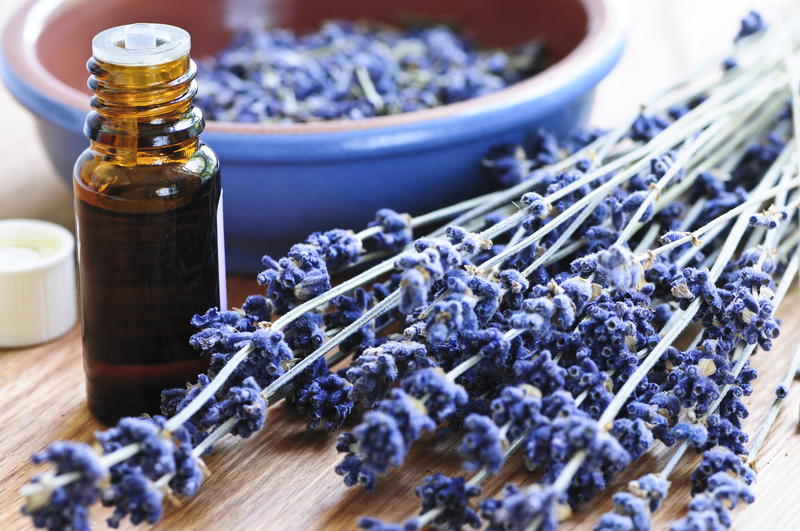Mastering the Art of Mould Removal on Window Sills
Posted on 02/10/2025
Mastering the Art of Mould Removal on Window Sills
Mould on window sills is a common nuisance faced by homeowners and renters alike. Besides being unsightly, mould growth can pose health risks and cause structural damage if left untreated. Learning how to remove mould from window sills properly is essential for maintaining a clean, safe, and visually pleasing indoor environment. In this comprehensive guide, we'll delve into effective techniques for removing mould from window sills, the reasons behind mould development, and tips for preventing regrowth. By the end, you'll master the art of mould removal on window sills with confidence and efficiency.
Understanding Mould on Window Sills
Why Does Mould Develop on Window Sills?
Mould thrives in moisture-rich environments. Window sills are particularly susceptible due to condensation, temperature differences, and insufficient ventilation. Here are the primary reasons why you may find mould accumulating on your window sills:
- Condensation: Windows are natural condensation points, especially during cool weather when warm indoor air meets cold window panes.
- Poor Ventilation: Limited airflow promotes humid conditions, allowing mould spores to settle and grow.
- Leaking Windows: Damaged or improperly sealed windows can allow rainwater or humidity to penetrate, creating ideal conditions for mould.
- Organic Debris: Dust, soil, and plant matter accumulating on window sills provide food sources for mould growth.
Risks of Leaving Mould Untreated
Failure to address window sill mould can have several adverse consequences:
- Health Issues: Prolonged exposure to mould can trigger allergies, asthma, and respiratory infections, particularly in sensitive individuals.
- Structural Damage: Mould gradually degrades wood, paint, and caulking, compromising your windows and surrounding walls.
- Unpleasant Odours: Musty smells caused by mould diminish indoor air quality and comfort.
- Unsightly Appearance: Visible black, green, or orange patches detract from your home's aesthetics.

Preparing for Mould Removal
Gathering the Necessary Supplies
Before you begin, assemble the following items for safe and effective mould removal from window sills:
- Protective gear: Gloves, mask (N95 or equivalent), and safety goggles to prevent contact with mould and cleaning solutions.
- Cleaning solution: Commercial mould killer, or make a homemade solution with white vinegar, baking soda, or bleach (never mix chemicals).
- Soft-bristled brush or sponge: For scrubbing affected areas gently.
- Microfiber cloths or paper towels: For wiping down surfaces and absorbing excess liquid.
- Spray bottle: To apply cleaning solutions evenly.
- Bucket: For rinsing brushes or cloths as you clean.
Ensuring Safe Working Conditions
Safety first! Open the windows to provide adequate ventilation during cleaning. Avoid direct skin contact with mould or harsh cleaning products. If you have a compromised immune system or respiratory issues, consider hiring professionals for severe infestations.
Step-by-Step Guide to Mould Removal on Window Sills
Step 1: Assess the Damage
Start by inspecting the extent of the mould infestation. Is it a small patch or a widespread issue? Minor cases can often be handled with DIY approaches. If mould has penetrated deep into wood, drywall, or insulation, you may need professional assistance or even window repairs.
Step 2: Remove Surface Debris
Before applying any cleaning solution, gently remove dirt, dust, or organic debris from the window sill using a dry cloth or vacuum equipped with a HEPA filter. This step allows the cleaning agent to penetrate the mould more effectively.
Step 3: Apply Cleaning Solution
Choose your preferred mould removal solution:
- White vinegar: An effective natural mould killer. Pour into a spray bottle undiluted and spray generously on the affected area.
- Baking soda: Mix one teaspoon in two cups of water. Spray or apply with a sponge for gentle abrasion.
- Bleach solution (for non-porous surfaces): Mix one part bleach with three parts water. Note: Only use bleach in well-ventilated spaces and never mix with ammonia or vinegar.
- Commercial mould remover: Follow manufacturer instructions carefully.
Allow the solution to sit for at least 10-15 minutes to ensure the spores are killed.
Step 4: Scrub and Wipe Clean
Using a soft-bristled brush, sponge, or cloth, gently scrub the treated area to loosen and remove the mould.
- Avoid excessive force, especially on painted or wooden sills, to prevent damage.
- Rinse the brush or sponge frequently in a bucket of clean water to avoid spreading spores.
Wipe the area thoroughly with a clean cloth or paper towel. Dispose of all used rags and sponges in a sealed plastic bag immediately after cleaning.
Step 5: Rinse and Dry
Wipe down the cleaned surface with a cloth dampened with water to remove any remaining cleaning solution. Dry the window sill completely using a dry towel; moisture left behind can promote new mould growth.
Step 6: Dispose of All Contaminated Materials
Used gloves, paper towels, and cleaning tools exposed to mould should be carefully sealed in a plastic bag and discarded. Wash all reusable supplies in hot water.
Preventing Mould Recurrence on Window Sills
Keep Your Window Sills Dry
- Wipe condensation daily: Especially during winter, use a dry cloth to remove water collecting on window sills and panes.
- Address leaks immediately: Repair or reseal windows to stop water intrusion from outside.
- Remove plants or objects: Don't allow water-trapping items to sit on sills for long periods.
Improve Indoor Air Circulation
Enhancing ventilation is key to reducing humidity and condensation:
- Open windows regularly to allow fresh air to circulate.
- Use exhaust fans in kitchens and bathrooms to expel steam and moisture.
- Move furniture away from windows to allow better airflow.
Manage Indoor Humidity
Maintaining optimal interior humidity (ideally between 30-50%) can drastically inhibit mould growth:
- Use dehumidifiers in rooms prone to condensation.
- Monitor humidity with a hygrometer.
- Dry clothes outdoors or use a vented dryer.
Regular Maintenance and Inspection
Preventative care is the most reliable way to keep window sill mould at bay:
- Inspect windows seasonally for signs of leaks, decay, or early mould spots.
- Repaint wooden sills with mould-resistant paint or sealants for added protection.
- Clean sills and frames frequently to eliminate dust, pollen, and debris that can feed mould.
Natural Vs. Chemical Mould Removers
Benefits of Natural Cleaners
Natural mould removers are non-toxic, environmentally friendly, and safe for families and pets. Ingredients like vinegar, baking soda, and hydrogen peroxide are highly effective against most household mould. They're also gentle on surfaces and won't damage paint or wood when used properly.
When to Use Chemical Solutions
For severe mould infestations on window sills, chemical-based mould removers (like bleach or commercial biocides) may be necessary. These are especially effective on non-porous surfaces such as metal or certain plastics. However, always take care:
- Ensure proper ventilation during cleaning.
- Avoid prolonged skin contact and inhalation of fumes.
- Never mix different chemical products.
If unsure, consult the manufacturer's instructions or seek professional advice for stubborn or hazardous mould problems.
When To Seek Professional Help
Signs You Need an Expert
- Mould covers a large area (over 1 square metre), or keeps reappearing despite cleaning.
- Structural damage is apparent--wood has rotted, or the sill feels soft and spongy.
- Health symptoms such as persistent cough, sneezing, or allergic reactions escalate after cleaning.
- Mould has spread into walls, ceilings, or insulation near the window.
Professional mould remediation teams have advanced equipment and experience to safely remove stubborn infestations and restore indoor air quality.

Frequently Asked Questions
Is it safe to use bleach on painted window sills?
*Bleach is best suited for non-porous surfaces and can damage paint or wood if not used carefully. Spot-test a hidden area first. If in doubt, opt for vinegar or a dedicated mould remover designed for sensitive finishes.*
Can mould removal from window sills damage my windows?
Proper cleaning techniques should not harm your window sills. Excessive scrubbing or harsh chemicals, however, may strip paint or stain wood. Always treat surfaces gently and follow with proper rinsing and drying.
Why does mould keep returning after cleaning?
Persistent mould typically signals unresolved moisture problems. Address humidity, leaks, and condensation to prevent mould recurrence on window sills.
Is window sill mould dangerous to touch?
Mould exposure can cause irritation; always wear gloves and a face mask during removal to safeguard your health.
Summary: Achieving Lasting Success in Mould Removal on Window Sills
Mastering the art of window sill mould removal takes more than a one-time cleaning. It requires a systematic approach--identifying the causes, using the right tools and solutions, and implementing lasting preventative measures. By following the advice outlined in this guide, you can keep your window sills spotless and free from harmful mould for years to come.
- Address moisture sources immediately.
- Choose the right remover for your surfaces.
- Maintain proper ventilation and humidity.
- Inspect and clean regularly for long-term prevention.
Say goodbye to unsightly, unhealthy mould and enjoy brighter, cleaner, healthier windows throughout your home. Mastering mould removal on window sills is an investment in your property's value, your family's wellbeing, and your peace of mind.




